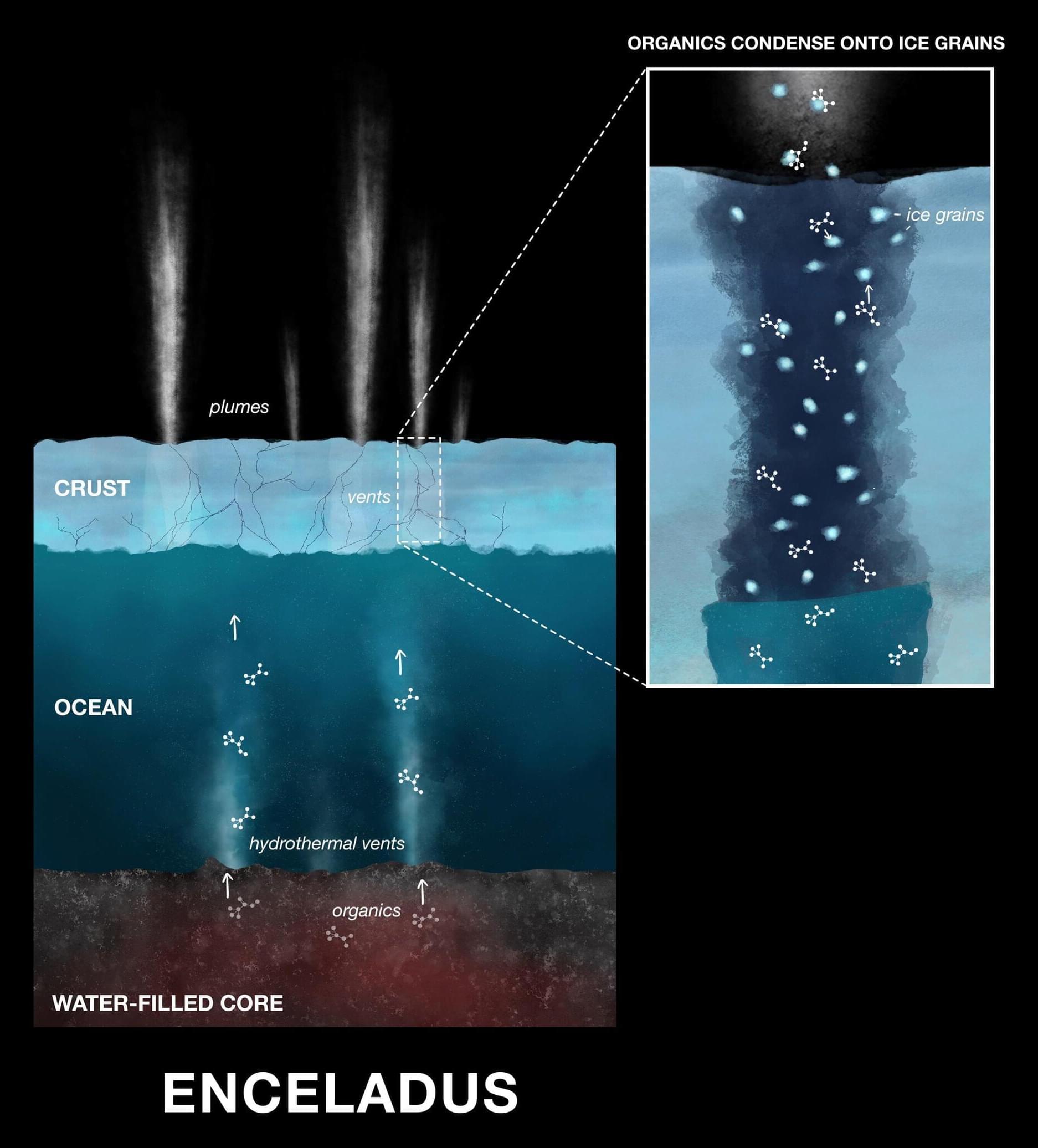Scientists digging through data collected by the Cassini spacecraft have found new complex organic molecules spewing from Saturn’s moon Enceladus. This is a clear sign that complex chemical reactions are taking place within its underground ocean. Some of these reactions could be part of chains that lead to even more complex, potentially biologically relevant molecules.
Published in Nature Astronomy, this discovery further strengthens the case for a dedicated European Space Agency (ESA) mission to orbit and land on Enceladus.
In 2005, Cassini found the first evidence that Enceladus has a hidden ocean beneath its icy surface. Jets of water burst from cracks close to the moon’s south pole, shooting ice grains into space. Smaller than grains of sand, some of the tiny pieces of ice fall back onto the moon’s surface, while others escape and form a ring around Saturn that traces Enceladus’s orbit.
